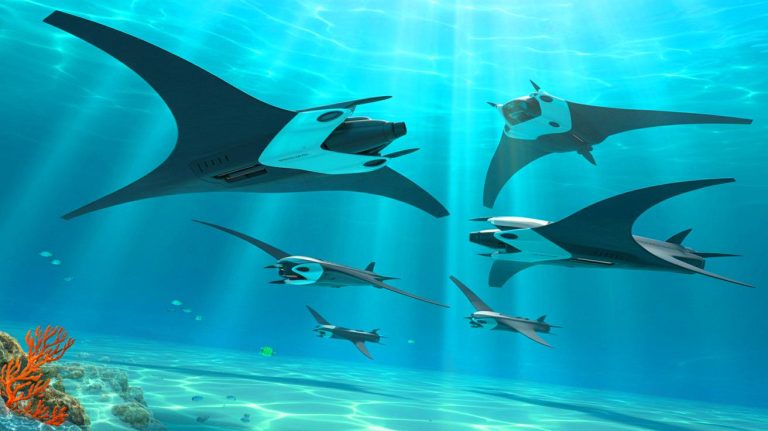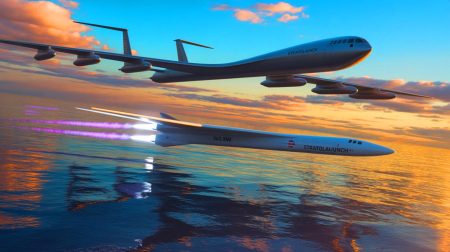| IN A NUTSHELL |
|
In the realm of technological advancements, nature continues to be a profound source of inspiration. The latest innovation in underwater technology draws from the graceful movements of manta rays. These majestic creatures exhibit a unique ability to glide effortlessly through the ocean, making them an ideal model for developing cutting-edge underwater drones. This article delves into the fascinating intersection of biology and technology, where scientists aim to harness the hydrodynamic secrets of manta rays to enhance underwater vehicle performance.
Exploring the Efficiency of Manta Ray Formations
Scientists from Northwestern Polytechnical University have embarked on a pioneering study to understand how manta rays’ group formations impact swimming efficiency. By observing real-life manta ray groupings, researchers created simulations to explore three primary configurations: linear tandem, V-like triangle, and inverted triangle formations. These formations provide insights into how manta rays achieve their remarkable efficiency in the water.
The research revealed that the tandem formation was particularly beneficial for the manta ray positioned in the middle. This individual gained a propulsion boost from the flow generated by the leading ray, significantly enhancing its maneuverability. Conversely, the triangular formations, while common in nature, did not offer the same hydrodynamic advantages. This discrepancy suggests that factors beyond energy efficiency, such as social interactions, might influence manta rays’ preference for these formations.
Nature’s Blueprint for Underwater Drones
The study’s findings have profound implications for the development of underwater drones. By mimicking the formations observed in manta rays, researchers aim to design drones that can operate efficiently in coordinated groups. This approach, known as biomimicry, leverages nature’s evolutionary wisdom to solve modern technological challenges. The trio of manta rays serves as a foundational model for understanding complex group dynamics, which could revolutionize aquatic robotics.
Gao and his team emphasize the importance of expanding their research to larger groups, potentially involving sophisticated deep learning algorithms to optimize drone behavior. By understanding the basic unit of three manta rays, scientists can simulate and enhance the performance of more extensive autonomous swimming systems, paving the way for futuristic underwater operations.
The Potential of Future Research
Looking ahead, the study advocates for further exploration of group swimming dynamics, considering multiple variables such as formations, spacing, and motion differences. Integrating artificial intelligence into these models could enable active control of individual motion parameters, resulting in drones that can adapt to complex underwater environments. This potential for innovation underscores the significance of combining biology with technology to achieve unprecedented advancements.
Published in the Physics of Fluids, this study highlights the transformative potential of biomimetic designs. As underwater tasks become increasingly complex, the need for efficient, coordinated operations grows. Inspired by nature, these advancements could redefine how we explore and utilize the ocean’s vast resources.
Biomimicry: The Future of Technology
Biomimicry, the practice of drawing inspiration from nature to solve human challenges, is gaining momentum in various fields. The study of manta rays is just one example of how biological insights can lead to technological breakthroughs. By understanding and replicating the mechanisms that make manta rays such efficient swimmers, researchers are pioneering new ways to navigate underwater environments.
This approach not only enhances the functionality of underwater drones but also offers a sustainable alternative to traditional propulsion systems. As technology continues to evolve, the potential applications of biomimicry are boundless, promising exciting developments across multiple industries. How else might nature guide the next wave of technological innovation?
Did you like it? 4.4/5 (30)









Wow, manta ray drones? I can’t wait to see them in action! 🤖🌊
Why do we need these drones? Are they planning to spy on us underwater now? 🤔
Biomimicry is such a fascinating field. Thanks for shedding light on this topic!
Are these drones going to harm the real manta rays in their natural habitat?
Great read! I had no idea manta rays could inspire such advanced technology. 🐠
This sounds like something out of a sci-fi movie. Can’t wait to see how it unfolds!
How do they ensure these drones don’t interfere with marine life?
Wonderful article! I’m inspired by how much we can learn from nature.